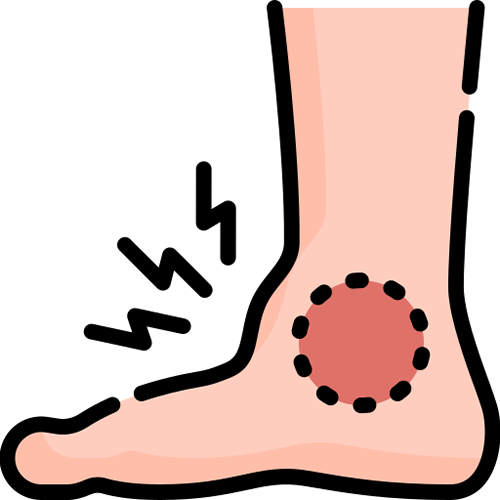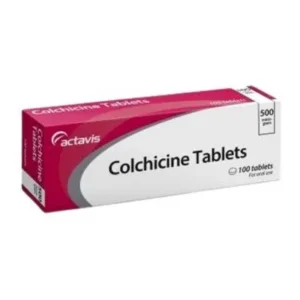No products in the basket.
Gout
Gout is a type of arthritis that causes intense pain, swelling, and redness in the joints, typically beginning with the big toe. It is one of the oldest documented illnesses, with historical references dating back centuries. Despite its long history, gout continues to affect millions worldwide, causing considerable discomfort and hindering mobility.

Gout
If you’ve experienced the severe pain of a gout attack, you understand how disruptive it can be. However, with proper management, you can control the condition and live a normal, pain-free life. This guide aims to offer insights into gout—its causes, symptoms, and the best ways to treat and manage it.
What Is Gout?
Gout is an inflammatory arthritis condition that develops when uric acid builds up in the bloodstream, forming sharp crystals in the joints. These crystals cause sudden inflammation and excruciating pain. Uric acid is a natural byproduct of purines, compounds found in certain foods like red meat, shellfish, and alcohol.
When the body produces too much uric acid or fails to eliminate it efficiently, the excess can form crystals that accumulate in the joints, triggering painful gout flare-ups. Although gout typically affects the big toe, it can also target other joints such as the knees, elbows, and ankles.
What Triggers Gout?
Several factors contribute to the development of gout:
- High Uric Acid Levels: The primary cause of gout is an excess of uric acid, which forms crystals in the joints, resulting in pain and inflammation.
- Dietary Factors: Consuming foods and drinks rich in purines (like red meat, liver, seafood, and beer) can raise uric acid levels, potentially triggering gout attacks.
- Obesity: Being overweight increases uric acid production and impairs the kidneys’ ability to filter it out of the body.
- Genetic Factors: A family history of gout may raise your risk of developing it.
- Health Conditions: Disorders such as diabetes, high blood pressure, and kidney disease can elevate uric acid levels, increasing the risk of gout. Certain medications, like diuretics, can also raise uric acid levels.
- Dehydration: Insufficient fluid intake can impede the body’s ability to excrete uric acid, raising the likelihood of gout attacks.
Common Symptoms of Gout
Gout often presents as sudden and severe pain, typically in the affected joint. The following are common symptoms:
- Severe Joint Pain: Gout flare-ups are typically abrupt and often occur during the night. The pain can be excruciating, especially in the big toe, but other joints may be affected as well.
- Swelling and Redness: The joint becomes swollen, red, and tender to the touch due to the presence of uric acid crystals.
- Limited Joint Movement: The affected joint may become stiff and difficult to move, restricting mobility.
- Extreme Sensitivity: Even gentle pressure on the affected area can cause intense pain during a flare-up.
Managing Gout: Treatment Options and Lifestyle Modifications
While gout may not be curable; it is manageable with appropriate medications, dietary changes, and lifestyle adjustments. By understanding its triggers and adopting healthy habits, individuals can reduce the frequency and severity of flare-ups, leading to a better quality of life.
Medications for Gout Relief
Several medications are available to help manage gout symptoms and reduce the frequency of flare-ups:
- NSAIDs (Nonsteroidal Anti-Inflammatory Drugs): Over-the-counter medications such as ibuprofen or prescription-strength NSAIDs can reduce pain, inflammation, and swelling during a gout attack.
- Colchicine: This medication is commonly prescribed to help reduce inflammation and pain during flare-ups. It works best when taken early in the attack.
- Corticosteroids: If other treatments are ineffective, corticosteroid medications, either oral or injectable, can help control severe inflammation and pain.
- Urate-Lowering Drugs: Medications such as allopurinol and febuxostat help lower uric acid levels over time, reducing the risk of future attacks.
Dietary Modifications to Control Uric Acid Levels
What you eat can significantly influence gout management. Certain foods can trigger gout attacks by raising uric acid levels, while others can help manage the condition:
- Limit Purine-Rich Foods: Foods like red meat, organ meats, shellfish, and sardines contain high levels of purines, which break down into uric acid. Reducing your intake of these foods can help lower uric acid levels.
- Reduce Alcohol Consumption: Alcohol, especially beer, can increase uric acid levels. Limiting or avoiding alcohol during flare-ups is crucial.
- Stay Hydrated: Drinking plenty of water helps the kidneys flush out excess uric acid, reducing the risk of flare-ups.
- Increase Low-Fat Dairy and Whole Grains: Research shows that low-fat dairy products and whole grains can help reduce uric acid levels and inflammation.
- Include Anti-Inflammatory Fruits and Vegetables: Certain fruits and vegetables, such as cherries, strawberries, and spinach, are known for their anti-inflammatory properties and can help manage gout symptoms.
- Maintain a Healthy Weight: Excess weight increases uric acid production and makes it harder for the kidneys to excrete it. Maintaining a healthy weight can reduce the frequency of gout attacks.
Lifestyle Changes to Prevent Gout Flare-Ups
Along with medications and dietary adjustments, certain lifestyle habits can help minimise gout flare-ups:
- Exercise Regularly: Regular physical activity promotes a healthy weight and improves joint health. However, avoid intense exercise during a flare-up, as it may worsen symptoms.
- Manage Stress: High stress levels can trigger gout attacks. Relaxation techniques like meditation, yoga, or deep breathing can help reduce stress.
- Avoid Dehydration: Proper hydration is essential to help your body excrete uric acid. Drink plenty of fluids, particularly water, to prevent dehydration.
Preventing Gout Attacks
While gout cannot be completely prevented; several measures can reduce the risk of flare-ups:
- Monitor Uric Acid Levels: Regular blood tests can help track uric acid levels. If your levels are elevated, work with your healthcare provider to develop a plan to lower them.
- Follow Medication Regimens: If prescribed urate-lowering medications, take them as directed to maintain normal uric acid levels.
- Adopt Healthy Lifestyle Habits: A balanced diet, regular exercise, stress management, and proper hydration are essential for preventing gout attacks.
Conclusion: Managing Gout for a Better Life
Gout is a manageable condition when treated effectively with medications, lifestyle changes, and dietary modifications. By keeping uric acid levels in check and making healthy choices, you can significantly reduce the frequency of flare-ups and enhance your overall quality of life.
If you are experiencing symptoms of gout, it’s important to consult a healthcare professional for accurate diagnosis and treatment. Early intervention and ongoing management are key to preventing long-term damage and maintaining a pain-free lifestyle.

